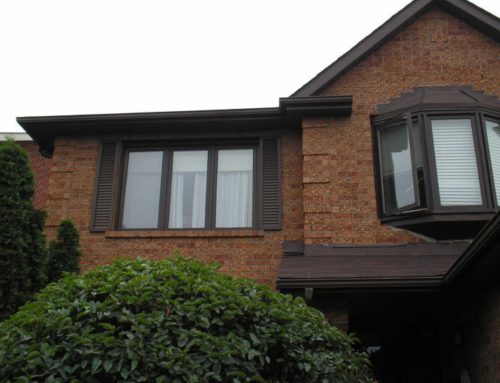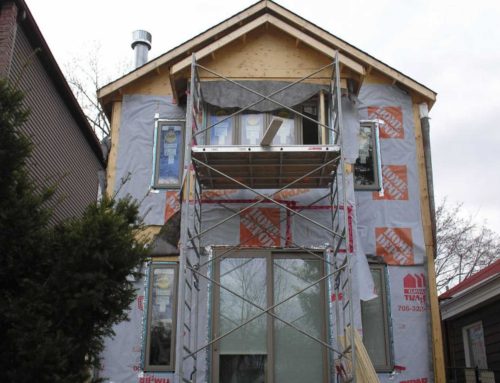We often think of our home’s siding as its cosmetic ‘skin’—the colour and texture that creates curb appeal. But what happens when that skin is broken? It is far more than a surface-level problem; it is a critical breach in your home’s most important defence system. Cracks, gaps, or warped panels in your siding are not just unsightly. They are open invitations for rainwater to penetrate the building envelope, where it can begin a silent but destructive journey. This journey can end with catastrophic structural damage, turning a simple repair into a massive project that could involve complex procedures like basement underpinning. This post will trace the devastating path of water from a small crack in the siding, through the wall cavity, down to the home’s wooden frame, and ultimately to the concrete foundation. It will reveal how a seemingly minor issue with damaged siding can escalate into a major structural crisis.
The First Breach: How Water Gets Inside Your Walls
The initial stage of water intrusion begins at the point of failure on the siding itself. These vulnerabilities can develop in several ways. Obvious impact damage from hail, flying debris from a lawnmower, or an errant baseball can create immediate cracks and holes. More subtly, years of exposure to sun and fluctuating temperatures can cause siding to warp, buckle, or pull away at the seams, creating significant gaps. The material itself can also degrade over time; older wood siding is prone to rot, while aging vinyl can become brittle and crack easily. This is why choosing the right siding materials to withstand moisture and weather is a critical decision for any homeowner, as durable, high-quality options provide a more resilient long-term defence against the elements.
Once an entry point is created, wind-driven rain easily forces water into these openings. The water becomes trapped between the siding and the home’s weather-resistant barrier, or house wrap. This is where the hidden damage begins, completely invisible from the outside. The trapped moisture slowly saturates the wall sheathing—the OSB or plywood that forms the wall’s structural backing. As this sheathing becomes perpetually damp, it begins to rot and delaminate, losing its structural integrity. This dark, damp environment also becomes a perfect breeding ground for mould and mildew, which can compromise indoor air quality and pose health risks long before any structural issues become apparent.
The Downward Spiral: Rotting the Bones of Your Home
Once water has breached the siding and saturated the wall sheathing, gravity takes over, pulling the moisture on an inevitable downward path through the wall structure. The water continues its descent until it reaches the sill plate. This is the critical piece of lumber that sits directly on top of the concrete foundation. It is the component responsible for supporting the entire weight of the wall framing and transferring that load to the foundation below. Its integrity is absolutely essential for the stability of the entire house. When this crucial piece of the frame is compromised, the entire structure is put at risk.
A constantly damp sill plate will inevitably begin to rot and soften. This is a major structural failure in progress. A rotted sill plate can no longer support the weight of the house above it. It compresses under the load, causing the walls to sag and settle. This settling process is what leads to secondary signs of damage inside the home. Furthermore, this damp, decaying wood becomes a highly attractive food source for destructive pests like termites and carpenter ants. Their presence introduces a second, parallel threat that can accelerate the destruction of the home’s wooden frame, turning a moisture problem into a full-blown infestation that compounds the damage exponentially.
The Final Destination: The Assault on the Foundation
The destructive journey of water culminates in an assault on the foundation itself. As the sill plate rots, water pools on top of the concrete and begins to seep into its naturally porous surface. This is where the most critical mechanism of damage, the freeze-thaw cycle, takes over. During the winter, this trapped water freezes. As water freezes, it expands by about nine percent with incredible force, creating micro-cracks in the foundation. When the ice thaws in the spring, more water seeps deeper into these newly formed cracks. Repeating this cycle winter after winter causes these tiny cracks to grow into large, significant fissures that compromise the foundation’s structural integrity. This is how a simple siding issue keeps your home dry no longer, and instead actively channels water to its most vulnerable point.
A secondary threat is hydrostatic pressure. As water runs down behind the damaged siding, it saturates the soil directly adjacent to the foundation. This water-logged soil exerts immense pressure against the foundation wall, which can cause it to bow inward and crack. Long after the damage has started, the warning signs finally appear inside. Homeowners might notice vertical or horizontal cracks in basement walls, or find that doors and windows now stick and have become difficult to open—a classic sign of foundation settling. A persistent, damp, musty smell in the basement is another red flag. This is why a professional home inspection can uncover hidden siding damage before it worsens, identifying the root cause before these severe symptoms appear. Ultimately, consistent exterior siding repair is essential for protecting foundations from this devastating chain of events.
Your Siding Is Your Shield, Not Just Your Skin
The destructive chain reaction is clear and unforgiving:
Cracked Siding → Wet Wall Sheathing → Rotted Sill Plate → Water Infiltration into Concrete → Foundation Cracks & Structural Failure
The cost of neglecting a minor siding issue must be weighed against the value of proactive maintenance. The relatively manageable cost of siding repair or replacement is insignificant when compared to the potentially astronomical cost of major foundation repair, which can run into the tens of thousands of dollars and involve disruptive, complex work. Siding maintenance should be viewed as a crucial, high-return investment in the home’s long-term health and stability. Walk the perimeter of your home each spring and fall. Look for cracks, gaps, and warping. Do not just see a cosmetic flaw. See a potential threat to your home’s very foundation. A small repair today can prevent a catastrophic and costly failure tomorrow.






